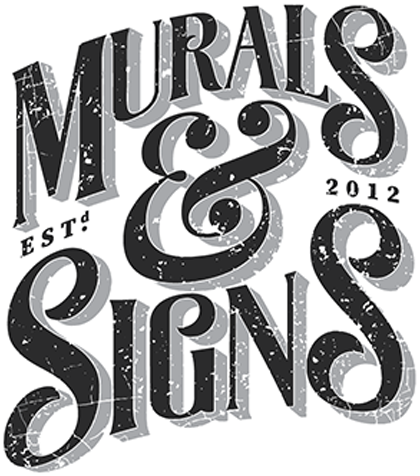In the realm of public art, commercial mural collaborations offer a unique avenue for artists and businesses to merge their creativity and vision. While these collaborations result in stunning visual displays that enrich urban environments, they also present intricate challenges related to intellectual property (IP) protection. This comprehensive guide delves into the critical strategies and considerations for safeguarding intellectual property in commercial mural collaborations.
Understanding Intellectual Property in Mural Collaborations
Before delving into protection strategies, it’s imperative to grasp the various forms of intellectual property that come into play in commercial mural collaborations. These include:
Copyright
Copyright is one of the most significant aspects of intellectual property for artists. In the context of murals, copyright extends to the original artistic expression depicted on the wall. It grants the creator exclusive rights to reproduce, distribute, display, and adapt the work. In a collaboration, clarifying who holds the copyright and how it will be used is pivotal.
Trademarks
In certain cases, a mural may incorporate a business’s logo, branding, or other distinctive marks. These elements are protected as trademarks. If a mural collaboration involves using such marks, it’s essential to outline their usage rights and limitations to prevent potential trademark infringement issues.
Moral Rights
Moral rights grant artists the authority to control the integrity and attribution of their work. These rights are particularly relevant in mural collaborations, as any alterations or misrepresentations of the mural could impact the artist’s reputation. Addressing moral rights in the collaboration contract is crucial to maintain the artist’s creative integrity.
Navigating Ownership and Usage Rights
Clearly defining ownership and usage rights is at the core of protecting intellectual property in mural collaborations. Address these critical components:
Ownership
Determining who owns the mural’s copyright is a pivotal discussion point. Collaborators may choose one of the following ownership models:
- Joint Ownership: Both the artist and the collaborating entity share copyright ownership. This requires mutual agreement on usage and reproduction.
- Transfer of Ownership: The artist transfers copyright to the collaborator. This grants the collaborator more control over the mural’s usage.
- Licensing Arrangement: The artist retains copyright but licenses specific usage rights to the collaborator. This offers more flexibility while safeguarding the artist’s control.
Usage Rights
Usage rights define how the mural can be utilized by the collaborating entity. Specify whether the mural can be reproduced, displayed, modified, or used for promotional purposes. Be explicit about limitations to prevent unauthorized uses that could dilute the artist’s work.
Crafting Comprehensive Contracts
A meticulously crafted contract is the linchpin of IP protection in mural collaborations. Address these elements to ensure clarity and prevent potential disputes:
Scope of Work
Detail the mural’s scope, design, location, and any specific requirements. This prevents misunderstandings about the project’s creative direction.
Copyright Attribution
Clearly stipulate how the artist’s name will be attributed to the mural. This maintains the artist’s recognition and reputation.
Usage Restrictions
Define how the collaborator can use the mural. Outline any prohibited uses to prevent potential infringements.
Alterations and Modifications
Specify whether and how the mural can be altered or modified in the future. This ensures that any changes align with the artist’s original intent.
Termination Clauses
Include termination conditions, detailing scenarios in which the collaboration can be terminated. This safeguards both parties’ interests.
Documentation and Documentation
Proper documentation plays a pivotal role in IP protection. Consider these strategies:
Detailed Design Records
Maintain comprehensive records of the mural’s design process, including drafts, sketches, and communication. These records can serve as evidence in case of disputes.
Register Copyright
Encourage artists to register their copyright with relevant authorities. Registration strengthens legal protection and facilitates enforcement.
Photographs and Documentation
Regularly document the mural’s condition through photographs. This can be crucial in case of damage, alterations, or legal disputes.
Educating Collaborators
Education is vital to prevent inadvertent IP infringements. Collaborators should understand the basics of intellectual property, their obligations, and the potential consequences of unauthorized use.
Workshops and Training
Consider conducting workshops or training sessions to educate collaborators about intellectual property laws and best practices.
Ongoing Communication
Maintain open lines of communication throughout the collaboration. Encourage discussions about potential IP-related issues to address them proactively.
Conclusion
The captivating beauty of commercial mural collaborations can only truly flourish when protected by a well-structured framework of intellectual property rights. By understanding the nuances of copyright, trademarks, and moral rights, collaborators can ensure that their artistic endeavors stand on solid legal ground. The process of navigating ownership and usage rights, crafting comprehensive contracts, and maintaining meticulous documentation is a testament to the commitment of both artists and collaborating entities to uphold the integrity of their collaborative efforts. As urban spaces continue to transform into living galleries, the protection of intellectual property remains an essential pillar in the realm of mural collaborations, fostering an environment where artistic innovation thrives while legal complexities are skillfully navigated.
Liability and insurance considerations for commercial mural artists
